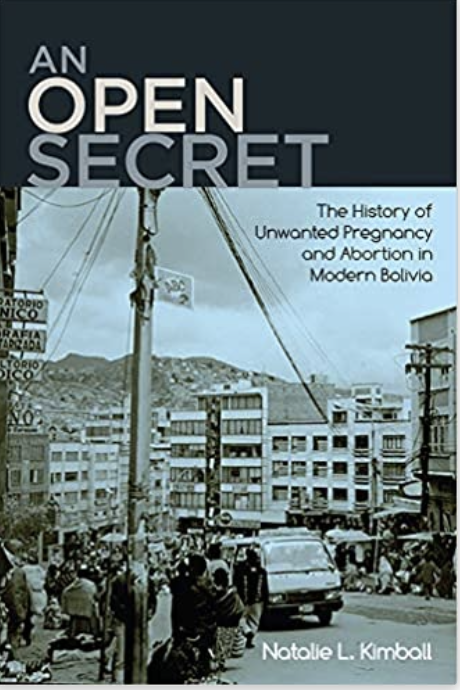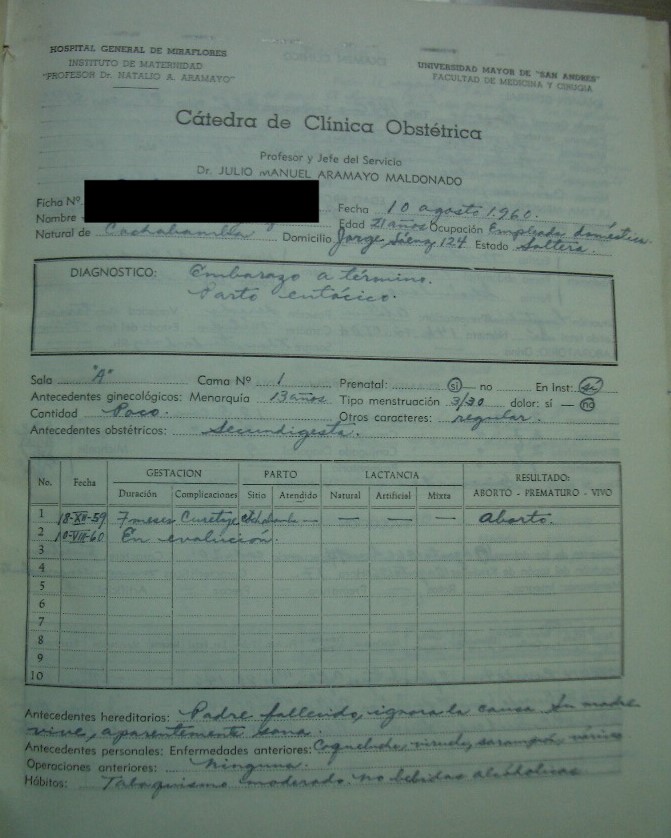Natalie Kimball
Tasha (Natalie) Kimball is an oral and social historian whose research focuses on the histories of gender, sexuality, and reproduction in Latin America during the twentieth century. Their recent book traces the history of unwanted pregnancy and abortion in Bolivia’s highland cities of La Paz and El Alto between 1952 and 2010. Drawing on oral interviews and medical records, the book examines the history of reproductive health policy and provisioning alongside personal experiences with unwanted pregnancy and abortion. It argues that individuals’ experiences with unwanted pregnancy and abortion matter; this is true not only because these experiences shaped the evolution of policies and services on reproductive health but because they challenge common misperceptions about how people make decisions about their pregnancies. The book is entitled An Open Secret: The History of Unwanted Pregnancy and Abortion in Modern Bolivia, and is available from Rutgers University Press.
Working with Primary Sources
This is the first page of a medical record from the La Paz obstetric facility, the Instituto de Maternidad Natalio A. Aramayo, that was created to document the visit of a young woman who had come to give birth in August 1960. Medical records from this facility are remarkably detailed and include demographic information on patients, gestational histories, and even information on patients’ families and daily habits. This record, which has been anonymized, indicates that the patient was a single, twenty-one year old woman from the city of Cochabamba who worked as a domestic employee. In the diagnosis section, the document shows that the woman visited the facility to give birth to a full-term pregnancy. Below that, the record shows that less than a year before, the woman had experienced a pregnancy loss at 7 months’ gestational age. I use the term “pregnancy loss” rather than “abortion” or “miscarriage” because the word in Spanish – aborto – does not by itself distinguish a miscarriage from an abortion. All we know from the record is that on December 18, 1959, the woman had a dilation and curettage procedure (ie., curetaje) at 7 months into a pregnancy. A dilation and curettage procedure (or D & C) could have been performed to terminate the pregnancy; alternatively, a D & C could have been the indicated treatment after a miscarriage. Information on the young woman’s parents, previous illnesses, and “habits” appears at the end of the medical record. Here, the document indicates that the patient’s father was deceased due to an unknown cause and that her mother was “alive and apparently healthy;” that the patient had previously suffered from whooping cough, chickenpox, measles, and varicose veins; and that she made moderate use of tobacco but abstained from alcohol.
We thank Tasha Kimball for providing this source.


